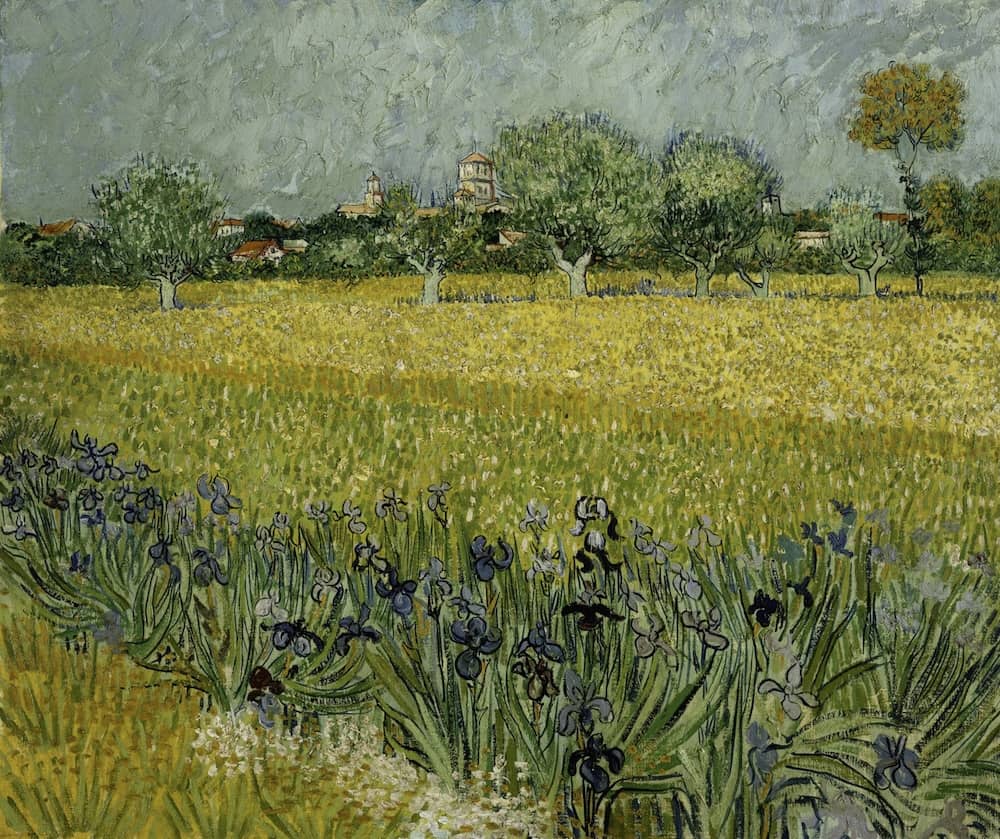Field with Irises near Arles, 1888 by Vincent van Gogh

When Van Gogh arrived in Arles he first staged at the Hotel-Restaurant Carrel on the rue Cavalerie, but by May had rented a small house at 2 place Lamartine, the Yellow House. He was transfixed by the scenery as winter had unfolded into spring, and the colours of the countryside sharpened by the clear yellow light of southern France radiated with a purity of tone. Immediately Van Gogh began painting the local landscape with frenetic energy and during the course of these last two years of his life he produced an enormous number of canvases. His palette brightened again from his Parisian paintings, and he wrote to his sister explaining how nature in the south could not be pointed with the same palette as that in the north. He seemed to develop a greater clarity of vision in Arles, drawing greatly on the precedent of the Japanese woodcut and refining his sense of line and form. His brushstrokes become more confident, and were applied with a rhythmic intensity that created a harmonious, almost musical quality to his paintings.
In the landscape, he felt he could see a reflection of the world he knew from his collection of Japanese prints. Japanese artists used large areas of colour in their compositions, often with a sharp diagonal. They also regularly zoomed in on a detail in the foreground. Van Gogh adopted these elements in his paintings. In his letter to his brother Theo, Van Gogh wrote:
I've now dohe two new studia like this: You alrendv have a drawing of one - a farm at the side of the main road among the wheat field. A meadow full of very yellow buttercups, a ditch with irises with green leaves
and purple blooms, the town in the background, a few gray willow trees, and a strip of blue sky.
If they don't cut the meadow, I'd like to do this study again, as the subject was truly beautuful and I had trouble finding the right position.
A small town surrounded by countryside filled with yellow and purple flowers - you can imagine, very much a Japanese dream.




















